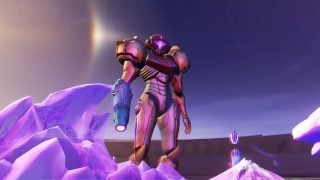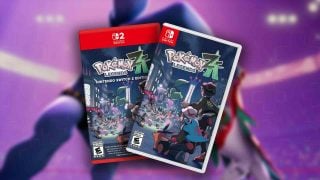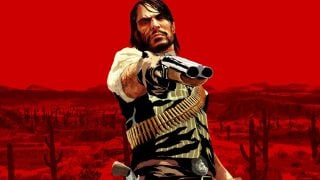The announcement
June 10, 2014 marked a big day in history for Nintendo. During the day of Nintendo’s E3 presentation that year, the company made its official announcement about its upcoming near field communication figurines: amiibo.
Even Nintendo never to expected the new toy line to blow up the way it did. What seemed to be more of an experiment with a new product to it, ended up being a natural phenomenon for consumers. Nintendo, with its longtime and dedicated fans, couldn’t predict just how well the announcement would be received and how in demand the figures would be right off the bat.
Shigeru Miyamoto later addressed the amiibo craze and their future regarding the popularity, stating that Nintendo was “now moving forward with projects that make use of NFC in a variety of unique ways.” He then made mention of Nintendo not just being a game company, but a toy company as well. And really, this shouldn’t come as a surprise to anyone after the year we’ve had!
The launch & reception
One of the only things that possibly received better reception than the announcement was the amiibo product itself. Released a year ago today in tandem with the release of Super Smash Bros. for Wii U, fans everywhere lined up to buy the game and the figures of their favorite characters. At the time of the first wave, which included twelve characters, no one could have predicted just how many there were going to be in the long run. Fans had no idea if there was going to be an amiibo for every character or only the most popular characters, or if this was going to be a Smash Bros. exclusive accessory.
We’ve come a long way.
There were characters that everyone expected to see: Mario, Link, Samus, Kirby, Donkey Kong, Pikachu and Peach namely. As some of the most popular and classic characters of the series and the company, Nintendo did a great job in making sure these were high in stock. I suspect Nintendo did this as a way to keep the younger generation of gamers happy, as they were less likely to collect each one and instead would want to just experience the amiibo support with the characters they were most familiar with. (I find this even more likely, as the amiibo were released right before the holiday season, a prime time for parents to buy the toys for their kids.)
But if you’re anything like me, these characters weren’t enough for you. Unfortunately for the Nintendo fanbase, a lot of you were like me, and Nintendo simply couldn’t keep up. Right from the start, fans entered a strange in between period of getting angry at Nintendo for not being able to produce enough to stock retailer shelves, and becoming excited about buying every amiibo they could find. Additionally, some fans even enjoyed the hunt, and there’s no denying that there’s something rewarding about finally getting your hands on one of the rarer amiibo. I, for one, was ecstatic when I finally completed the Holy Trinity from Wave 1.
Nintendo was met with a lot of backlash as the production of its classic characters stayed steady, while its more obscure characters (even characters like Fox McCloud) became more and more limited. The company frequently tried explaining itself by saying that it had no idea amiibo were going to be as popular as they were, and that it would fix the problem soon; however, this didn’t seem likely. Not long after that announcement, production of Villager, Marth and Wii Fit Trainer were halted completely.
At this point, Nintendo fans had no idea whether to be happy or angry with the company, but the one thing they were sure about was that they were going to keep buying amiibo, because as Wave 2 hit stores, fans were met with the exact same issues. While seeing a steady stream of Zelda, Luigi, and Diddy Kong, people were tearing their hair out to get their hands on Captain Falcon, Pit or Little Mac.
A few months in
As Waves 3 and 4, the Super Mario amiibo, and the Splatoon amiibo were released, we saw this trend continue. With a steady alternating release pattern of approximately 12, then six, we usually saw a struggle with acquiring at least half of each release. Fans couldn’t be satisfied, and Nintendo continued to struggle to provide enough for everyone that wanted them. This became even more of an issue when Wave 3 released. Retailers started to pick up on the trend and subsequently started buying retailer exclusive rights to certain figures. These amiibo saw an even larger increase in rarity, leaving people with nothing more than just a hope of a restock.
Finally, we got a little bit of a reprieve in Palutena and Dark Pit for the first part of Wave 5. While not perfect, we saw Amazon do a great job in releasing Palutena. It seemed like more people ended up happy than not, and while the release of Dark Pit wasn’t perfect, it wasn’t the worst we’d ever seen. Then the second half of Wave 5 hit shelves, and suddenly all seemed right in the world.
Nintendo finally picked up on amiibo production and realized it needed to produce enough of each character to allow people equal chance at acquiring them– and that’s exactly what it did. Even the retail exclusive Bowser Jr. saw awesome stock numbers, and I hadn’t personally heard of anyone struggling to get any of the characters that came out on September 11th, including the Classic 8-Bit Mario. There were also massive restocks of some of the rarer figures, and a lot of retail exclusives (such as Lucario, Greninja and Shulk) were seen making appearances in other stores to help accommodate. Additionally, releases since then, like the Retro and Mii Fighter 3-Packs, have been seeing pretty good stock numbers, which gives a lot of us fans hope that this isn’t simply a trend but the norm from now on.
While this recap might be a bit long, you’ve got to admit that it’s fascinating to reflect back on how much the amiibo line of toys evolved in just its first year. Other companies have been around with toys-to-life products, some much longer than Nintendo, and yet we’ve never seen anything like the amiibo phenomenon in any other brand. Interestingly enough, this wasn’t even the first time Nintendo tried using toys-to-life, or its NFC reader on the GamePad. Nintendo had a brief stint with some figures made for Pokémon Rumble U, but they ultimately didn’t take off with the public. I think it’s safe to say we’re all glad Nintendo didn’t give up on that endeavor entirely!
How about now?
It’s a fair assumption to make that Nintendo and its fans are in a very good place amiibo-wise. Clearly, Nintendo has struck a gold mine with its toys-to-life figures, even though that was evident in the beginning of the craze. I think it was more important that Nintendo made sure the gold mine wasn’t going to run dry too early, and as soon as it could safely say it wasn’t, it dove in headfirst. Nowadays, we’re seeing a lot of improvements in amiibo from a general standpoint. Just looking at the newly released Animal Crossing series, it’s obvious that the quality is getting even better than it already was (which is saying a lot), and we’re seeing better functionality and inclusion in more major games. Even more exciting, we’re seeing Nintendo experiment more with different games by using even more new characters and amiibo lines, a great example being the Animal Crossing series.
It’s interesting to see Nintendo taking risks so early on with these toys– not even a year into the amiibo’s production. The Yarn Yoshi came as a complete surprise to consumers, and I don’t think anyone anticipated the amiibo/Skylanders crossover. By doing something so drastically different so early on, Nintendo set itself up for a potential tarnishing of a set standard for amiibo. Fortunately for the company, it worked, and people took greatly to the toys, which raises the question of whether or not Nintendo will deviate from the standard figurine more often, to do things that match the characters or environments it’s breathing new life into.
The reception and popularity of amiibo as of late has stayed relatively steady, and has maintained a positive high that we hope continues far into 2016.
Collections
We’ve seen some pretty impressive amiibo collections all around the web, and it’s almost humbling getting to see some of the things people manage to put together. From simple collections of a fan’s favorite characters out of the box, to collections that include every figure new-in-box from Japan and North America, to the countless amazing customs that people have made, to those select few that have managed to get their hands on a misprinted amiibo, there’s no doubt that people are taking pride in their collections.
And for good reason, too! While one figure may be reasonably priced, amiibo start to add up if you’re a completionist like so many amiibo fans are. If you had any hope of getting your favorites at retail price when amiibo first hit shelves, you really had to work for it. Lining up in the cold for four hours before a store opened was a very serious reality for fans, which, in a way, makes their collections just as impressive.
Closing thoughts
With the company’s most recent Nintendo Direct, we’ve gotten a glimpse into what the first month of 2016 holds in terms of amiibo, and it’s already pretty great. It’s amazing to see how seriously Nintendo is taking these figures. The addition of the Wolf Link amiibo with Twilight Princess HD was an incredible surprise nobody saw coming, despite everyone already knowing about the upcoming release. I just like knowing that Nintendo is able to implement amiibo functionality into games from older, beloved consoles.
With only three more Smash Bros. characters in need of an amiibo announcement (including the newly announced Cloud Strife), I think it’s safe to question where amiibo are heading next. There’s no doubt that amiibo have stood mainly with the Smash Bros. platform for the entirety of 2015. With all those characters already released, it’s sure to open up room for more opportunity for new games and characters.
No matter what Nintendo has in mind, though, we’re sure it’s going to be good!
Leave a Comment






